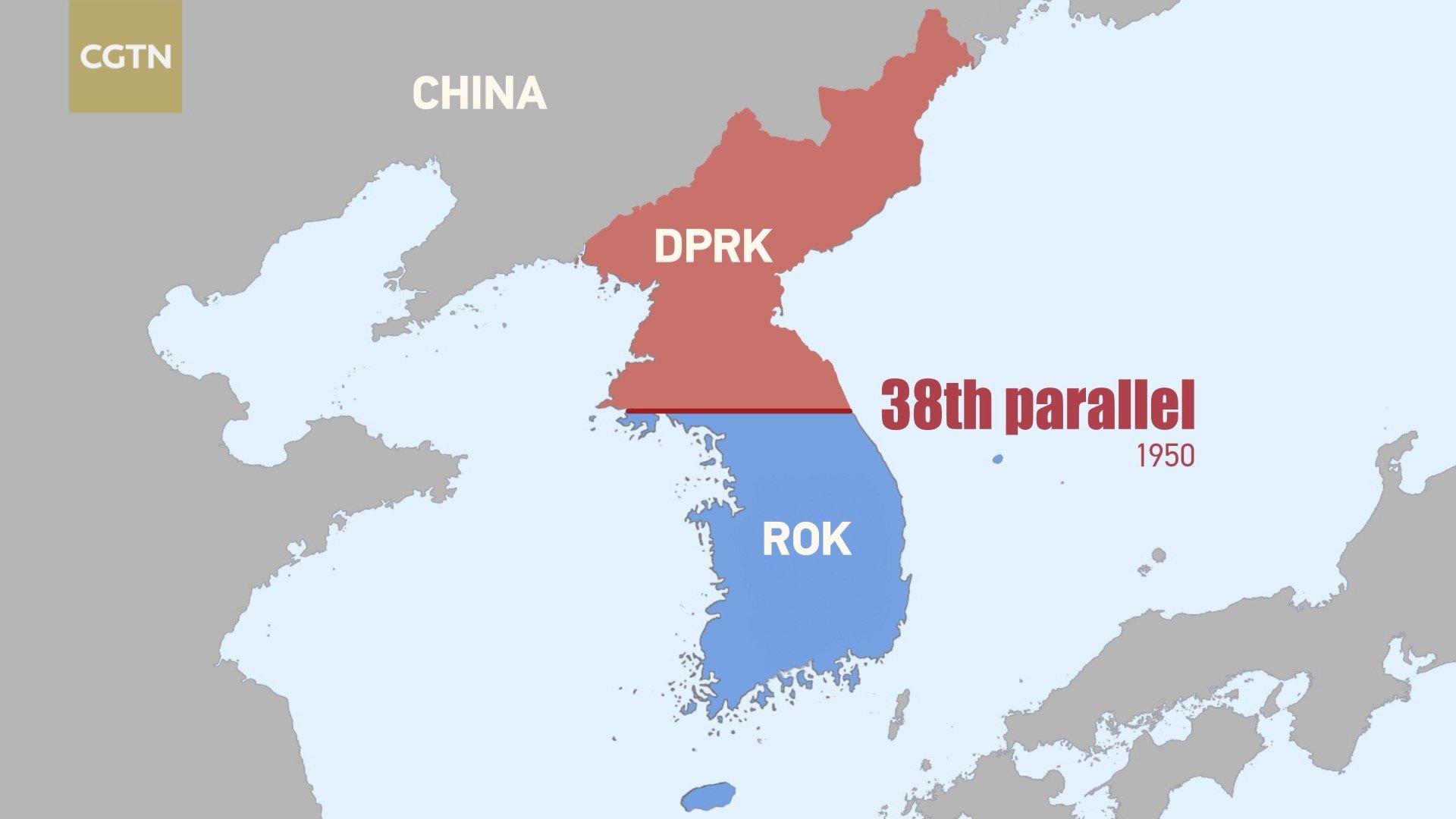Living in the Violence of Division
73 years ago, the Korean War broke out on June 25, 1950. It was a conflict that was rooted in ideological clashes and led to division on the Korean Peninsula. The reality of this conflict cannot be escaped even today. The Korean War continues within individuals and society as a whole in both the South and the North.
Division of Korea along the 38th Parallel
19th-century political scientist Carl Schmidt stated that war as an act may be over, but war as a state is ongoing. Division of the Korean Peninsula is frozen in a state of war and still dominates the lives of Korean people.
This division impacts several aspects of society. First, Korean people are divided. The Korean nation has been a mono-ethnic group of people for over 5,000 years. Although throughout history, Korea has been separated into multiple kingdoms, there has never been as distinct of a barrier within the people as there is today. For over 70 years, Korean families have been separated across the North and the South, unable to communicate let alone visit one another. They have had to live with the fact that they may never be reunited with their family.
Family Reunions for Separated Families from the Korean War
Secondly, it is a territorial division. All land north of the 38th parallel is now North Korea. South of the 38th parallel is South Korea. Unfortunately, land topography differs between the North and the South. Approximately 80% of North Korea’s land is comprised of mountains and uplands. Therefore, most arable land on the Korean Peninsula is in the South. This discrepancy has led to disproportionate distribution of farmland and therefore discrepancies in food security between the North and the South.
Thirdly, division created polarizing political systems and conflicting sovereignty over Korea. Ever-present friction exists between communism in the North and democracy in the South. Capitalism in the South and socialism in the North also set the stage for clashing economic systems. With a strong drive to preserve and reunite the nation, both countries claim sovereignty over the entire Korean Peninsula. Neither of the countries officially recognize the other, further adding to this dispute.
As a result, the state of war on the Korean Peninsula has created division in the minds of Korean people and kept society captive to a deeply rooted conflict. In essence, Korean division has created a social phenomenon called “division violence”. Division violence refers to a visible or invisible violence that is created from conflicted situations.
This division violence can be seen in militarization on the Korean Peninsula. Practically all men in both the North and the South serve in the armed forces. In the military, men learn to hate and fear their Korean brothers and to lash out in violence. Thus, military culture has had an absolute influence on family culture in Korea as both fathers and sons are subject to military training.
In this way, society has become desensitized to violence. Many young people in South Korea are indifferent to the reality of the conflict with the North. This desensitization has permeated other levels of society. Insensitivity towards others is increasing as well as bullying culture within school, even elementary schools. Youth suicide is also at its peak in South Korea.
The state of war operates in the lives of North Koreans in a more progressive way. Under national slogans of “30-days battle”, “60-days battle”, and even “100-days battle”, individual and social life must align with top-down national mandates. Even children in daycare centers and kindergartens are exposed to horrific scenes depicting the massacre of civilians by the U.S. military. This is how North Korean society lives out the state of war in a concrete way, influencing children’s education, common laborers’ workloads, and company objectives.
Kindergarten Relay Game in North Korea
Awareness of this ongoing state of war on the Korean Peninsula is desperately needed. Active combat ceased on July 27, 1953, but conflict in the hearts and minds of the Korean people continues to affect all generations of Koreans. Only when tangible changes towards healing and wholeness happen will it be possible to stop the current cycle of unnecessary violence. Such changes must include recognizing the damage caused consciously and unconsciously by the division of Korea.


